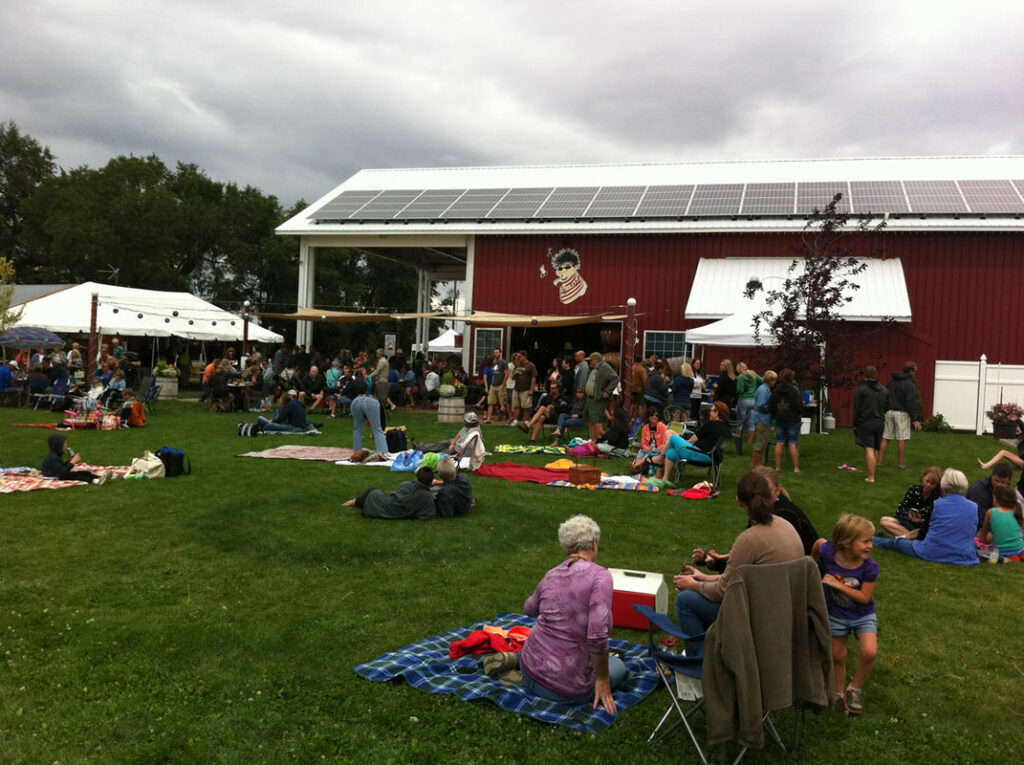
By: Brian D. Kaider, Esq.
You’ve secured federal registration for your trademarks and you’ve been building your brand recognition. Per your trademark attorney’s recommendation, you’ve had quarterly searches conducted to find similar marks. Lo and behold, a new entry to the market is using your trademark. Now what? Stop and take a breath; let the initial surprise or anger settle. There is a lot to consider before taking any action.
Take Stock of the Situation
First, take a look at your own trademark. Is it the name of your winery or of one of your products? Is it a national brand or one that is distributed in a small geographic area? In what classes of goods and services is it registered (e.g., class 033 for wine, class 040 for “custom production of wine for others,” etc.)?
Then look at the competitor’s mark. Is the mark identical to yours or similar? How similar? Is it broadly distributed? Is it used for the same goods and services as your mark? If not, how similar are the goods and services? Are your products marketed through the same trade channels? Are consumers likely to encounter both your products and theirs? Have they attempted to register their trademark and, if so, where are they in that process?
No one question will be determinative in any given case, but on balance, they will help develop a sense of how much effort should be expended to enforce your rights. As discussed below, there are numerous paths, each with its own set of risks and potential rewards. An international brand that is known throughout the industry, like E. & J. Gallo, must be far more protective of its Gallo® mark than a small winery in Oregon that has a registered trademark for a rosé product only distributed in the Pacific Northwest.
First Contact
As the owner of a registered trademark, it is your duty to “police” your mark; that is, to monitor unauthorized use of your mark by others and to enforce your right to exclusivity of that mark. When large corporations learn of potential infringement, their immediate response is generally to have their attorneys send a cease and desist (C&D) letter. For smaller companies, a personal attempt to contact the owner of the infringing business is often effective. Sometimes the other party simply did not know about your mark. If you found their use of the mark before they spent considerable time and money developing it as a brand, they may be willing to simply let it go.
When making these calls, it is important to maintain a demeanor that is both friendly and firm. There is no need to accuse the other side of wrong-doing or of violating your trademark knowingly. However, you should simply let them know that you do have a registration for the mark and that their use is likely to cause confusion in the market as to the source of your respective goods. If you give them a reasonable amount of time to work through any inventory bearing the infringing mark and to rebrand, this can often be the end of the matter.
Cease and Desist Letter
If the friendly approach doesn’t work, the next step is generally a cease and desist letter. This is most effective if drafted and sent by an attorney. The tone of these letters tends to be more matter-of-fact. They identify your trademark(s); explain that you have spent a considerable amount of time, effort, and money to build your brand around the mark; identify the other party’s infringing use; state that the use is unauthorized and likely to cause economic harm and loss of goodwill in your brand; and demand that they stop using the mark within a given time frame.
While these letters can sometimes be effective, especially against smaller companies, they have become so commonplace that often they are simply ignored by more savvy companies who may wait to see if further steps are taken before deciding whether to rebrand. Accordingly, you should carefully weigh all of your options and decide in advance whether you will escalate the matter if your C&D letter is ignored.
Trademark Opposition
If the other side has attempted to register their mark, there is a narrow window of opportunity for you to challenge their application before it registers. If, after conducting a search of other marks, the U.S. Patent and Trademark Office (USPTO) determines that the mark is registerable, it will publish the mark in the Official Gazette. This publication opens a 30-day window for anyone who believes they will be harmed by registration of the mark to file an opposition to the application.
This process should not be entered into lightly. In some cases, simply filing the opposition will be enough to get the other side to give up its mark. But, if they choose to fight the opposition, you will find yourself in a litigious process that takes time, effort, and money to complete. As in civil litigation, the parties to an opposition file motions and briefs, request documents from the other side, take depositions, serve interrogatories that must be answered, and present their evidence to the Trademark Trials and Appeals Board for its consideration.
If the opposition goes all the way to the trial stage, it will generally take at least 18 months from when the notice is filed to when the last brief is due and will cost each side in the tens of thousands of dollars. As with civil litigation, most oppositions do not reach the trial stage, because the parties are able to come to terms and settle the dispute on their own. But, this often does not occur until sometime in the discovery phase, after both sides have spent a considerable amount on legal fees.
It is important to note that the object of an opposition proceeding is to prevent registration of the other side’s trademark and, if you are successful, that is your sole remedy. There are no monetary damages awarded, nor can you recover your legal fees from the other side. Moreover, while they will lose their ability to register their trademark, it does not necessarily mean the other side will stop using the mark on their goods or services. In that case, you would have to file a trademark infringement litigation (see below) to get them to stop using the mark, entirely. In practical terms, succeeding in an opposition will often be enough to get the other side to abandon their mark, because if you were to follow through with a civil litigation, they could be on the hook for treble damages for willful infringement.
Trademark Cancellation
If you discover the other side’s trademark application after the 30-day opposition window has expired, your only option to challenge the mark at the USPTO is to wait until the trademark actually registers and then to file a trademark cancellation proceeding. Though there are some differences between cancellation and opposition proceedings, particularly if the challenged mark has been registered for more than five years, they are similar in most procedural respects.
Trademark Infringement Litigation
As one might expect, filing a trademark infringement case in federal court is the nuclear option. Depending upon the jurisdiction, the time frame for completing a litigation may be faster or slower than an opposition or cancellation proceeding at the USPTO. But, whereas those procedures will likely cost the parties tens of thousands of dollars, a civil litigation will likely reach six figures, or more.
The reason for this higher cost is that there are more issues to consider in these cases. If your are successful in a civil litigation, you may not only obtain injunctive relief, foreclosing the defendant from all future use of the mark, but also may obtain monetary damages associated with the defendant’s past use of the mark, as well as attorney’s fees expended in the proceeding. Moreover, if the defendant is found to have willfully infringed your trademark, they may be required to pay treble damages.
These issues, which are not even addressed in an opposition/cancellation, add breadth to the scope of discovery taken, which increases the cost. Further, whereas most opposition/cancellation proceedings are decided without an oral hearing, a civil litigation generally requires live testimony and argument in front of a judge or jury. These proceedings require a great deal of attorney preparation, dramatically increasing legal fees.
Conclusion
As the owner of a valid trademark registration, you are obligated to police your mark and failure to do so can result in a dramatic diminishment of your rights or even outright abandonment of your registration. But, that does not mean you have to file a civil litigation against every minor infringement. Determining the appropriate path in any given situation requires a careful evaluation of all the circumstances and balancing the risks of action versus inaction. It is critical to engage a knowledgeable trademark attorney, who will properly assess these risks, your likelihood of success, and the most effective course of action in your case.
Brian Kaider is a principal of KaiderLaw, an intellectual property law firm with extensive experience in the craft beverage industry. He has represented clients from the smallest of start-up breweries to Fortune 500 corporations in the navigation of regulatory requirements, drafting and negotiating contracts, prosecuting trademark and patent applications, and complex commercial litigation.
bkaider@kaiderlaw.com or call (240) 308-8032









